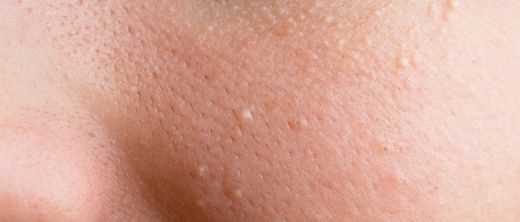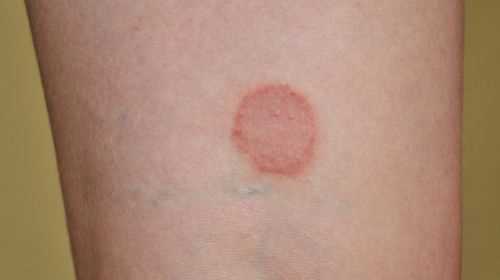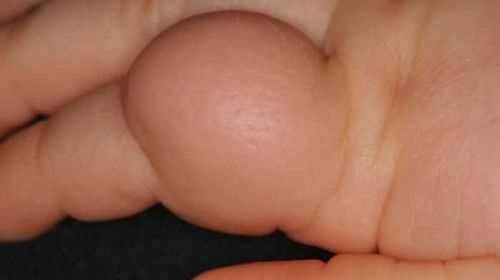Author: Monika Preuk, medical writer
Last updated: August 23, 2021
Milia only look like blackheads at first glance. The stubborn skin nodules are cysts that should be specially removed – but only if they are bothersome. Milia can appear at any age. More about the causes of how to remove the semolina.
Milia do not hurt and, strictly speaking, are not a disease. However, if the nodules appear on the face, especially on the eyelid, or in very large numbers, they are a major problem for those affected and are perceived as a major cosmetic problem.
Article content at a glance:
Milia are not blackheads, but cysts
Because the skin nodules look similar to semolina, they are colloquially called skin semolina or a single milieu is also called semolina.
How to recognize milia:
- whitish-yellowish nodules under the skin
- Diameter about 1-2 mm
- hard consistency
- occur individually or in groups
Anyone who knows these typical signs of milia will no longer confuse them with a blackhead. Blackheads are mostly soft and their edge is reddish due to the inflammation, whereas milia are hard and not inflamed. Milia are tiny cysts in the skin. These are benign, solid capsules made from connective tissue and skin cells.
Cysts can form in different sizes in the body. The cavities in these solid capsules usually contain liquid, such as tissue fluid or blood. There are different types of cysts. Milia mainly contain the horny substance keratin, which strengthens hair and nails. This explains why semolina grains are so hard and often get even harder over time.
Milia: These are the causes behind the semolina
The exact cause of milia is not known. Semolina is a common occurrence in some families, so genes may play a role. Because women in particular get milia, the hormones could play a role. Skin damage is also discussed as a trigger.
On the basis of these causes of milia, the skin nodules can be classified medically:
Primary milia: The semolina forms spontaneously and for no apparent reason. The face is usually affected. Presumably, however, hormones are involved. Because women often get milia as part of the menstrual cycle or during menopause. Primary milia usually occur at the exits of the sweat glands or on the follicles of hair, i.e. skin openings where hair grows outwards. Primary milia often heal on their own.
Secondary milia arise from skin injuries. It doesn’t always have to be a cut or a graze. Sunburn or inflammation can also result in skin grit. Sometimes milia form after shingles (herpes zoster) has healed. Secondary milia grow exactly where the skin has been injured.
Milia in babies – a special case
Semolina grains in newborns are an exception. Boys in particular often develop milia all over their face immediately after birth. Because during pregnancy and especially during childbirth, babies come into intensive contact with the mother’s female sex hormones. This is not a problem for girls, but boys often respond with milia. Most of the time, this is not a cause for concern, because the Millions heal on their own and completely within around six weeks. This is why parents should by no means tamper with their baby’s milia.
Remove milia yourself?
Because semolina grains are so hard and encapsulated, they don’t just squeeze out like a blackhead. Anyone who nevertheless tries to remove milia themselves must expect inflammation, recurrence of the milia and scars.
Therefore, those affected should better go to a dermatologist’s practice. On the one hand, it can be reliably diagnosed there whether it is actually a question of milia and not special warts or another skin disease. Second, the dermatologist removes milia professionally and without consequences.
Have milia professionally removed: cost and effect
Doctors or a trained beautician remove milia with a special procedure. To do this, the nodule is opened with a tiny incision. This is done with a sharp cannula or a small scalpel (lancet). Then the keratin granule is pressed out. The tiny wound usually heals without forming a scar. This is especially important when several milia have grown in the thin skin on the eyes or eyelids.
The laser in the doctor’s office offers a relatively new way of getting rid of milia without scars. The laser is aimed at the milia and the laser light evaporates the water in the skin precisely at this point. The milia are literally carried away. Because only the top layer of skin has been removed, only a little scab is left afterwards. When the tiny wound underneath has healed, it will fall off without scarring.
At the beautician, milia removal using a lancet costs up to ten euros each. However, medical help should be sought to remove the milia, especially if there are milia in the area of the eyes. With the classic method, i.e. with a scalpel, this costs from 20 euros. Dermatologists’ practices charge around 80 euros for the laser treatment of milia. Those affected have to pay these costs themselves, because milia are not considered a disease, but a cosmetic problem.
Milia can come back
Especially when those affected try to express milia themselves, the grains of semolina can keep coming back. If remnants of the capsule remain in the skin, the milia grow again and fill up again with keratin. Only when the cyst is completely peeled out of the skin – which happens with a scalpel or laser – they usually no longer appear. In some people, however, milia keep coming back, which is medically called relapse.
Prevent milia with special care
Anyone who is prone to recurring milia, especially on the face, should consider a few things when taking care of their skin. These tricks can at least reduce the risk of a relapse:
Do not use fatty care products, gel-based cosmetics are better.
Wash your face thoroughly with warm water, warm facial affusions are even better. This opens pores and softens milia.
Massage the face in small circles with a very soft skin brush. This cleans down to the pores and tears open the envelopes of the milia, if they are not yet too hard and encapsulated.
Go to one regularly and have your face cleaned out. Milia that are just emerging are usually removed without any problems.
.


